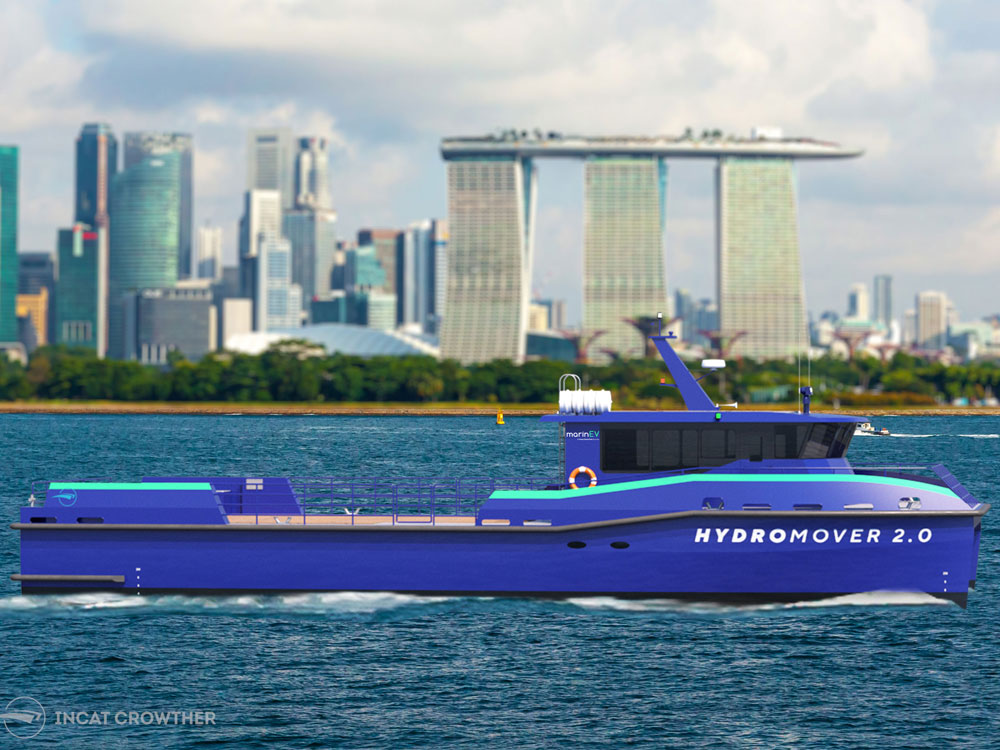Incat Crowther has been commissioned to design an all-electric light cargo vessel for marinEV, a division of Yinson GreenTech specialising in zero-emissions cargo and crew transfers. The vessel, Hydromover 2.0, will be used to transport stores, food and spare parts to ships anchored in the Singapore Strait and preparing to dock at the Port of Singapore.
Hydromover 2.0 features an overall length of 23.4m (or 23.25m on the waterline), an overall breadth of 7.6m, a depth of 3.15m and a draught of 1.38m, fully laden. To be built in marine -grade aluminium, the vessel’s layout includes a 65m2 cargo deck, permitting a payload of 25tonnes.
Designed to accommodate four crew and to carry up to 12 passengers, the boat’s tank capacities include 3,000litres of fresh water and 250litres of sullage, with no need to store MDO. Instead, the powertrain incorporates a lithium-ion battery system, two electric motors and twin azimuth thrusters, which will give the vessel a service speed of 10knots, increasing to 14knots max.
The main deck is arranged to host the wheelhouse, a mess seating up to seven persons, a food preparation area/pantry and a bathroom. Incat Crowther says: “The wheelhouse features dual touchscreen displays that offer real-time updates to the crew, enhancing safety onboard. Hydromover 2.0 also incorporates advanced decision-making features such as energy optimisation, waypoint calculation, collision detection and the ability to coordinate remote and autonomous functions.”

The vessel’s deck area permits a payload of 25tonnes
Hydromover 2.0 is expected to join marinEV’s fleet in 2025, and to boost the city state’s Maritime and Port Authority’s drive for a complete transition to battery, biofuel and/or hydrogen power for all harbour vessels by 2030.
The original Hydromaster 1.0 was developed by Singapore’s Goal Zero Consortium, comprising Yinson GreenTech, designer SeaTech Solutions, boatbuilder/workboat operator Lita Ocean, class society RINA Hong Kong and battery tech specialist Shift Clean Energy. That vessel, which measures 18.5m x 8m, has primarily been used as a demonstrator by Lita Ocean and fellow domestic operators DM Sea Logistics and Tian San Shipping, among others.
The Goal Zero Consortium also received support from the Technology Centre for Offshore and Marine, Singapore (TCOMS) and the Singapore Institute of Technology (SIT), which worked to develop a digital twin of the vessel type to enable further research into boat hydrodynamics, propulsion options and battery optimisation (see Ship & Boat International January/February 2024).




